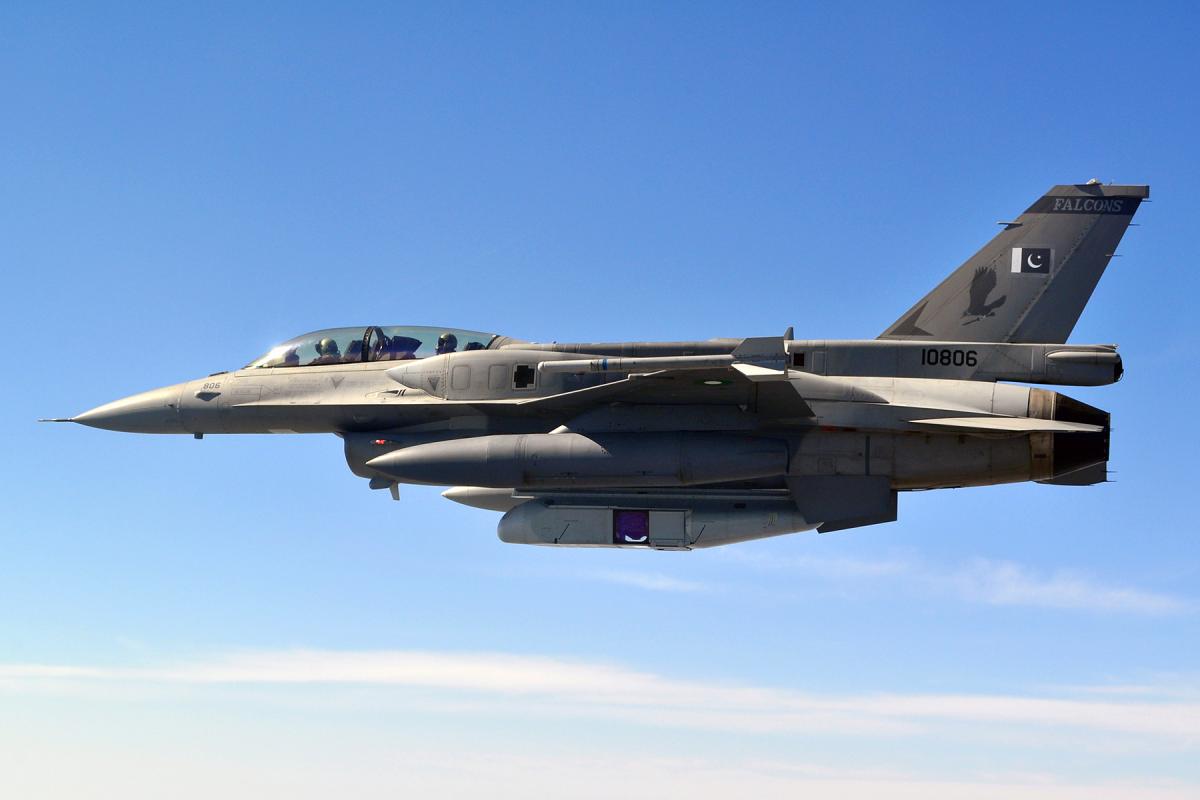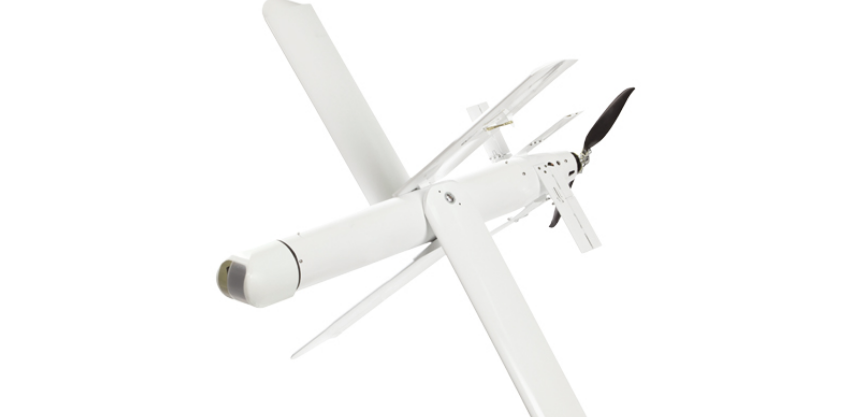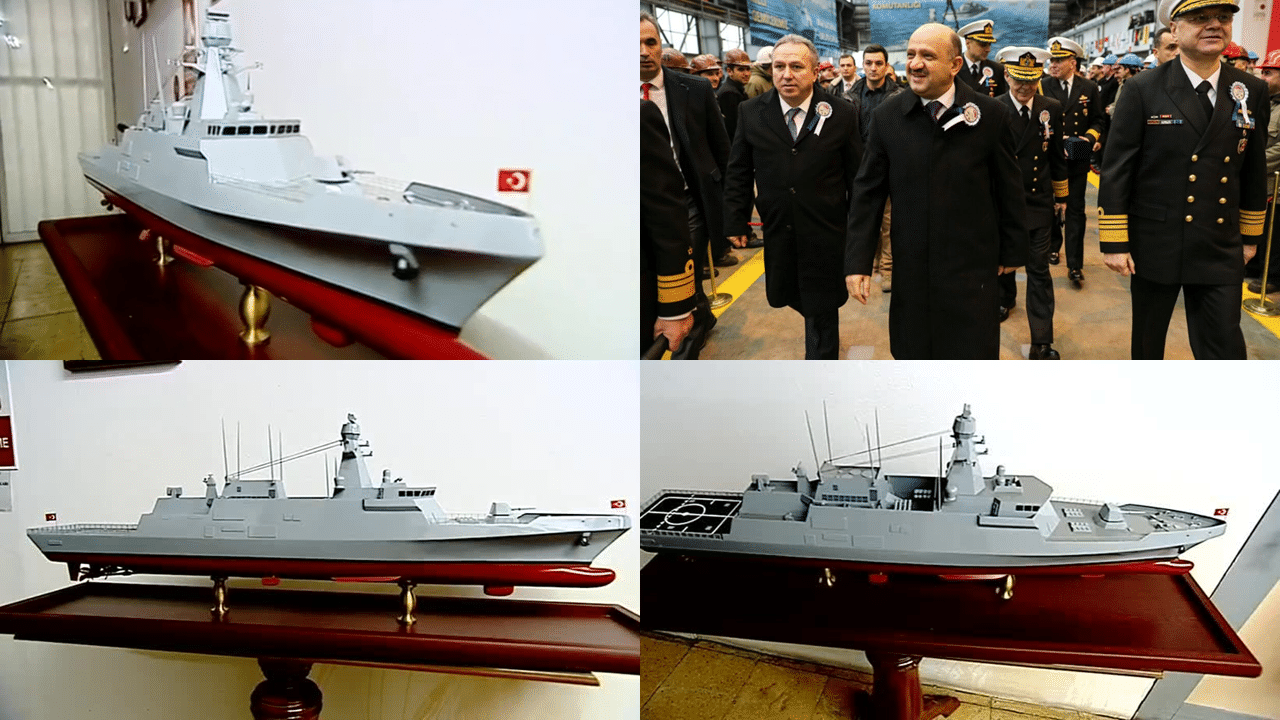2969Views 29Comments

Discussion: Pakistan’s options for addressing India’s air warfare lead (Part 3)
A general idea of the challenge posed by the Dassault Rafale in the use with India and the issues Pakistan would have to begin examining were outlined in part one of this series. Part two overviews the costs associated with expensive foreign platforms and makes a cost-centric case for the JF-17 Block-III.
A tier-one sensor and onboard electronics suite are essential to practically mitigating the threat and efficacy of a tier-one air-to-air missile such as the Meteor. A stand-off jamming pod, integrated jamming self-protection suite, chaffs, and perhaps even an electronic countermeasures (ECM)-based decoy such as the Leonardo BriteCloud can offer a dense electronic warfare (EW)/ECM buffer to help mitigate the Meteor.
One does not necessarily need a complete high-end fighter to acquire such technology, especially when these subsystems can be acquired directly off-the-shelf from Chinese, Italian, and British vendors. Granted, there is no guarantee of success in stopping a Meteor air-to-air missile, but that reality stands true for the Typhoon, Su-35, F-16, and Gripen as well.
The reverse is also valid. There is no reason why a top-tier air-to-air missile from a JF-17 towards any IAF fighter would with absolute guarantee reach its target, especially when the IAF will field comparable (if not superior) EW/ECM subsystems. However, that does not change the need to have the JF-17 armed with top-tier air-to-air missiles when such munitions elevate its chances of survival and victory. Granted, there may be an issue in terms of gains being marginal relative to cost, but this should only be examined on a case-by-case (i.e. subsystem-by-subsystem and munition-by-munition) basis.
There are concerns with this approach:
First, one must account for the reality that the current JF-17 airframe is that of a lightweight fighter. An effective active electronically-scanned array (AESA) radar – and that too combined with a quality EW and ECM suite – can add to the weight of the platform (e.g. via cooling systems).
Second, it is unlikely the RD-93 will be swapped out for a lighter and more powerful turbofan (e.g. RD-33MK) under the current run of 150 planes. Weight reduction may be achievable by switching the JF-17’s flight control system to a fully digital fly-by-wire (as opposed to the hybrid solution currently in place), but the extent of such a switchover is unclear (though it may be a necessity in the end).
Third, the timeline is a problem as well. There is no date as to when the JF-17 Block-III would enter full-scale production, though under current circumstances 2019-2020 could be a reasonable guess. The PAF would probably look to upgrade the Block-I/II to as close to the Block-III as possible, but if an upgrade is put into motion, a number of the older JF-17s may be placed in a non-operable state.
Fortunately, the main challenge is not the very long-term because at some point the JF-17 Block-III – or a Block-III-derived late model version – will be inducted in substantial numbers. However, there is a period in the early-to-mid-2020s where there is a risk of a quantitative deficiency in AESA radar-equipped aircraft. It would be within this period that the PAF would actually be in the process of producing and inducting JF-17 Block-IIIs, not necessarily bringing them to full operational form. In this sense, one can validly argue for an off-the-shelf acquisition, so as to provide a ‘bridge’ ahead of Block-III procurement. An analogy to this would be the induction of the F-16C/D Block-52+ and Mid-Life Update (MLU) taking place before and in parallel with the JF-17 Block-I in the early 2010s.
As outlined in part one, there must be a purpose behind introducing a new fighter platform, and the PAF could argue that it needs a high-tech solution to address a capability gap (before the Block-III). However, as discussed in part two, most off-the-shelf options are expensive.
From a purely cost and technical standpoint, the Saab JAS-39E/F Gripen NG is the most accessible Western option at $100-130 million U.S. a unit. Cost aside, it is not likely that Sweden would pursue the Pakistani market without at least trying its hand in India. For the short-term at least, this avenue is unlikely.
Alternatively, a late model variant of the J-10 – such as the J-10B or J-10C – from China could be sought, though neither has been approved for export (yet). Granted, Chinese export approval for the J-10B/C is not in place, but it could be set in the next several years. An affordable AESA radar-equipped medium-weight fighter platform is something AVIC would likely be interested in offering to the market, especially in the developing world (which cannot access Western alternatives due to cost and/or political barriers).
If fighters from Russia are being sought, then the Su-35 and MiG-35 (which is being marketed with an AESA radar and is equipped with a turbofan the PAF might be interested in for the JF-17) would be options. Interestingly, the MiG-35 would likely offer the best balance of cost, performance, and technology to the PAF, especially when there is potential to have subsystems, munitions, and possibly engine commonality with the JF-17 platform. On the other hand, the Su-35 offers valuable operational capability gains thanks to its superior range and payload (in comparison to the current PAF fleet).
The Eurofighter Typhoon cost roughly as much as the Rafale cost India, though it is unlikely that Pakistan would benefit as much in the way of commercial offsets. For such an acquisition to have a chance at being successful, negotiations would have to be led by a party that is on relatively sound terms with Pakistan, such as Italy and/or the United Kingdom. Moreover, some form of credit or term financing will be required in order to push a PAF order to fruition, which in turn is dependent on the selling party’s confidence in the Pakistani economy over the medium-term. Unfortunately, the interim breathing room from a Typhoon acquisition could come at the expense of the JF-17 over the long-term, especially if Pakistan’s structural economic conditions do not turn (and remain) for the better.
Suggesting that the PAF could seek another fighter platform will seem to contradict the case made in favour of the JF-17. However, as outlined in part one, a fighter acquisition must be driven by a legitimate requirement, such as introducing cutting-edge technologies to the fleet or addressing gaping shortfalls. Having made the case for the JF-17 Block-III and examining how it could form the nucleus of the PAF’s long-term response, a risk of quantitative deficiency in the early-to-mid 2020s was identified. In fact, this was in light of a fairly optimistic examination. A less optimistic look at the JF-17 Block-III may argue that the platform may not even enter production until the early 2020s (as opposed to the late 2010s).



29 Comments
by Shershahsuri
If JFT Block 3 is delayed. Then why not upgrades like HUD and a HOBS AAM installed on JFT Block 2? Mr.Bilal Comments plz?
by SP
Pakistan has to improve JF-17 and buy additional JF-17s.
Pakistan has buy an advanced 5th generation fighter.
The only question remaining is does Pakistan need an additional aircraft type as a stop gap measure to stop the IAF dominating the skies.
The best thing to do would to wait for the arrival of 5th generation aircraft like the FC-31 but due to serious shortfall in ability to contain IAF in the event of hostility, waiting is not a luxury that PAF can afford without being negligent and complacent.
Only question really remaining is what type of aircraft will PAF purchase. Personally I think it should be one that has deep strike ability, long endurance, nuclear capable that can carry a heavy load of armaments, good ecm that can operate as mini awacs. I think the new aircraft should be twin engine. There is no point in buying something similar to JF-17 or FC-31. I also don’t think there is any point in buying a western aircraft due to possibility of sanctions. Best option would be J16 with a proven Russian engine but if the J16 is not available then J11 should be able.
by Sami Shahid
hahaha part 3….well Pakistan should definitely continue to upgrade JF-17 but only JF-17 will not help. Pakistan should look for an alternate of F-16 as the Lockheed Martin wants to close the production of F-16’s and Pakistan cannot buy used F-16 without the permission of US. SAAB Gripen is the best option for Pakistan and Chengdu J-10 if not the SAAB Gripen.
by Muhammad Khurram Bhatti
Problem with SU-34 is that it is a deep strike fighter at heart. I doubt that in current circumstances Pakistan needs a deep strike fighter. What we need is an air superiority fighter and in good numbers that can ensure air supremacy to allow JF-17 and others to perform their strike roles. A such focused J-31 would be the best bet for PAF where JF-17 will form the point defense and strike layer with J-31 being predominantly tasked for air superiority.
by HSM
Can the J-31 counter a jet such as the Pak-Fa or another 5th gen jet such as the F-35? Additionally, we are putting all our eggs in one basket with China.
by MT
jf17 block2 crashed yday probably due to engine malfunction. With RD93 I doubt pak jf has 60%operational ability if indian mig29 with advanced rd93 variant naval are suffering with 35-45% serviceability.
by SP
The plane crashed probably due to disorientation of the pilot due to low level night flying at sea. Cause of crash most likely pilot error.
by U
Honestly I love your analysis, but I have a Q: Will Pakistan be able to aqquire Meteor? As the general perception is now that India has signed up for it, it wont let this happen, while much of your good news for Thunder is based on the possibility of it getting armed with Meteor.
by Wajahat Shafi
what abt J31
by MT
Let’s hope for safety of pilot.But ejection in sea is risky.
but I feel that pakistan armed forces lack accountability.
No cag report no audit possible on pak military.that’s why I suspect paf too suffer with similar operating deficiency as iaf do
by Muhammad Khurram Bhatti
I believe one of the observations regarding its airframe was that it is designed for air dominance. So armed with appropriate subsystems it shall be able to do the job.
by nob hamid gul
It seems that a new fighter fleet aprt from acquiring 5th gen platform is confirmed for Paf.
by MT
Too many wishes for Pakistan with barely few bill $budget and bare minimum local development capabilities.
Nobody knows what radar and subsystem are being added in block 3 given the work isn’t happening at kamra.
This may seem like plan 2050. Just try even doing basic development integration of 1missile and u ll need 5 yrs.
Russians India had friendship pact signed in 1971 but even with —that scale of amity nd strategic co-op India can’t produce many basic su 30 components.
Remember that su30 was completely built by Russia with Indian funds.
India are struggling with basic MRO for rd93mk;su30 nd mig29.
Russian crashed record 15-20 aircraft/heli in 2015.
so if Incase Pak becomes Russian close Buddy then u should priori estimate true timeline and feasibility of your requirements given size of pak market is not even 3rd of India
by MT
No harm in dreaming;) sincerely speaking Pak can t order su35 at least till 2018-19.
Mig35 maybe Easy to buy
Not until Russia get order of super sukhoi upgrade from India
by AMAN
Brother
Su-34 can do such operations too and yes don’t doubt capabilities of Su-34
it is equipped with best radar and good air to air missiles such as R-77 ,R-37,R-73 and so on . believe me it will perform both roles.
by AMAN
Bilal bhaijan
1)))))))—— PAKISTANI AIR FORCE WANTS LEAD TO IAF THEN IT SHOULD BUY SU-34 FULLBACK HEAVY FIGHTER BOMBER AND SU-35 FIGHTER BECAUSE WESTERN COUNTRIES WONT SELL ANY ARMS TO PAKSITAN.
2))))))))——-AND IF PAF WANTS TO DOWN IAF RAFAEL AND SUKHOI THEN IT SHOULD BUY MIG -31 HEAVY INTERCEPTOR FIGHTER.
BOTH OPTIONS ARE GOOD AND MIG-35 IS NOT NOT READY YET THEN YOU SHOULD CONSIDER THE OPTIONS GIVEN ABOVE.
by junkie
Dude, I have noticed you always speak with a note of finality on what Pakistan is capable of. The truth is, except if you are working in Kamra at a high level, you have no idea what Pakistan is capable of.
by HSM
Maybe, I am too naive to say this but one day our relation with China will be similar to our relation with USA today. Our planners should plan for everything and not just keep our policy defensive and India centric
by Muhammad Khurram Bhatti
You maybe right but even if that doesn’t happen, and I hope it doesn’t because then we will have all our borders insecure, still there is no alternative to self reliance
by MT
Back it up with proof.
so far we all knw that entire r$d being handled by Chengdu
by Sami Shahid
J-31 is nice
by bill
Considering past history of Russian jets though both Su35 and Mig35 look to be potent yet provide no edge over Rafael’s superior tech. Question is not to equip PAF with same gadgets as present in Rafael but to get a potent fighter jet which is able to counter Rafael with it’s superior gadgetry.
Su35 though agile yet at close turns it struggles further it is not so far having AESA radar so no matter how much it’s PESA radar is powerful yet is of questionable nature. Further Russian BVRs are yet to have parity with Western once. The Mig 35 is a lighter fighter evaluation of Mig 29 not easy to handle and though have AESA yet not powerful enough.
On the other hand honestly one should not assume that F16s with Synthetic Aperture Radars and without IRST along with not having AMRAAM like AIM 120 c7 or AIM-9X may counter Rafael.
PAF will and shall adopt bitter road sooner or later. One feasible option is to get Trench-1 Euro-fighter from UK and Italy on cheaper rates like second hand F16s and get them upgraded with latest gadgetry.
On the other hand JF17 block-III induction should be started by end of 2018 , it may be equipped with Marlin-BVR and R darter HOBS, further PAF may try to get their tot. On the other hand PAF should at least start JV with Italians for production of domestic AESA radars in medium term meanwhile in short term they should import same along with IRSTs from Italy.
by AMAN
WEST WILL NOT SELL ANY WEAPON TO PAKISTAN
ONLY WEAPON YOU CAN GOT IS FROM CHINA AND RUSSIA OR OIC COUNTRIES
AFTER FURTHER READING I HAD CONCLUDED THAT
BUY TOTAL OF 8 BILLION $ AIRCRAFT IN NEXT 4-5 YEARS
EITHER —- J-31 OF 8 BILLION$= 120-140 UNITS
EITHER —– COMBINATION OF SU-34 AND J -31 OF 8 BILLION $= 130-150 UNITS (
50 SU-34 HEAVY FIGHTER AND 80 J-31)
AFTER HAVING SUCH INVENTORY OF ADVANCE FIGHTER NO ONE WILL DARE TO CHALLENGE AIR SUPREMACY OF PAKISTAN.
PAKISTAN ZINDABAD!!!!!
by MT
none of the expert know which radar is chosen for block3.
only a naive person ll assume that block3 can be made n 2yrs.
largely integration of those2 missile is by far 5-6yrs job at chengdu as kamra lack the capacity to carry out such work.
Same case for IRST. block2 with bare minimum change took 5-6yrs and most important work of IFR probes integration exceeded the time frame.
by junkie
Fortunately the true capabilities of paf are a state secret and you and I shall never know their full extent. Lack of evidence doesn’t mean a deficiency in capability, it simply means we either gather the evidence or keep our mouths shut.
by Salman Khan
nice.
by MT
It’s not a nuclear Bomb making factory. So don’t come up with such churlish excuses to hide incapabilities of your industry.
What’s are the component’s of jf17 made indigenous n Pak??
by Syed Zain Haider Rizvi
Pakistan should focus on procurement of hypersonic attack capabilities to neutralise premptively any attack on pakistan.
150 such platform will be more than enough to neutralising aggressive capabilities of india
by Umair Arshad
simplest solution.. S-400!